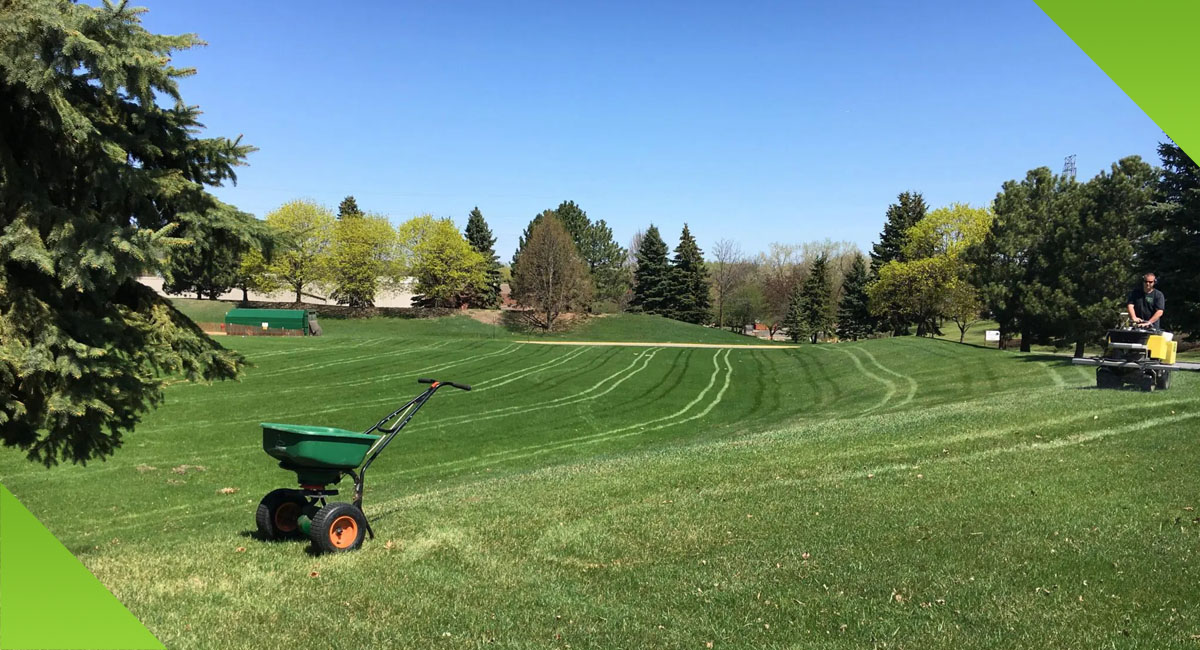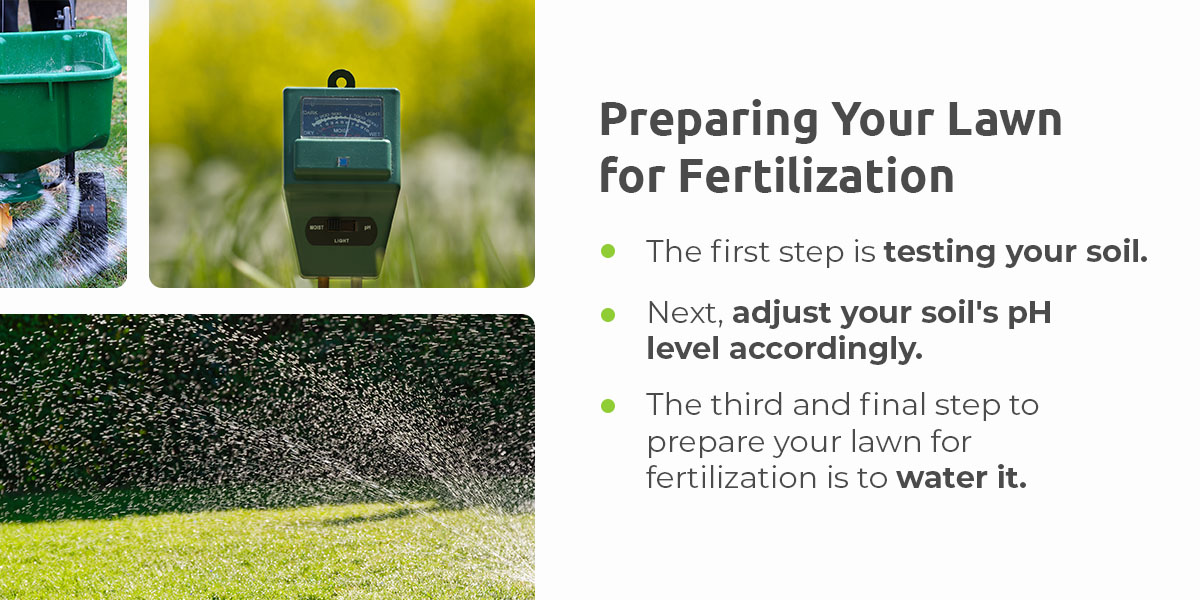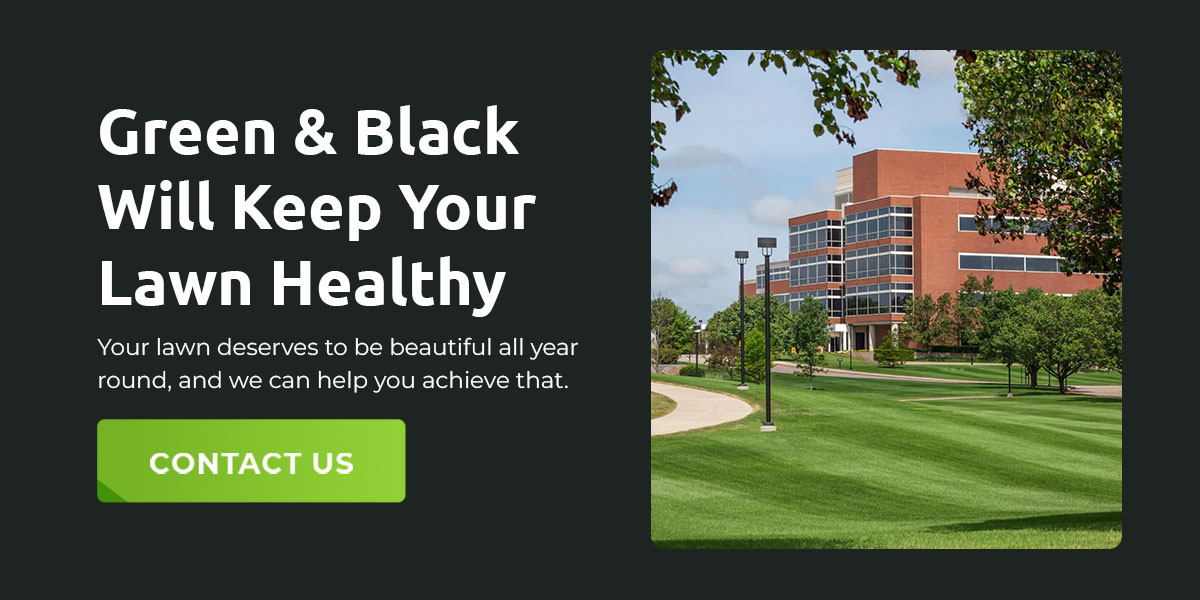Jump to:
- The Basics Of Lawn Fertilization
- Preparing Your Lawn For Fertilization
- Choose The Right Fertilizer For Your Lawn
- Best Practices For Applying Fertilizer To Your Lawn
Applying fertilizer to your lawn is a vital part of lawn care and is critical to your lawn’s health. If you want a green and vibrant lawn, fertilizer is essential. This guide teaches you everything you need to know about how to fertilize lawns and why it’s so important. There is more to the process than throwing something from a bag on your grass.
You can have a thriving lawn every year by starting with the basics and learning the more complex parts of the process.
The Basics Of Lawn Fertilization
Your grass needs the right nutrients to grow. These nutrients are in large quantities of fertilizers to ensure your soil is packed with everything your grass needs. As the turf grows, it can drain the soil of all nutrients. Additionally, most nutrients plants need are water-soluble, so they can leach from the soil over time. Fertilizer replaces any nutrients that go missing or are lacking in your soil.
These are the most important nutrients provided by fertilizer:
- Nitrogen: Nitrogen promotes the healthy growth of grass blades. It also builds proteins and helps grass create more chlorophyll, which is used for photosynthesis. When soil is untreated, it typically will not provide the right amount of nitrogen needed for your grass to flourish.
- Potassium: Potassium is an essential nutrient for the long-term health of your grass. It’s needed for photosynthesis and cell division. Both of these processes determine how well your grass will grow. Potassium-rich soil helps your grass withstand droughts, being stepped on, and various types of stress. You will need potassium in your soil to keep your grass alive during the winter.
- Phosphorous: Phosphorus is a crucial nutrient your soil needs to have. It is used in practically all your lawn’s energy processes. Despite its importance, your soil only needs small quantities of phosphorous, so you are unlikely to find much of it in fertilizer. This chemical produces amino acids and is a key part of glycolysis, respiration, and photosynthesis. Phosphorous is considered a pollutant if it is drained away by water and leaks into waterways.
Preparing Your Lawn For Fertilization
Lawn fertilization is more effective if your lawn is properly prepared. These are the three steps you need to follow to prepare your lawn for fertilization.
- The first step is testing your soil. By testing your soil, you will know its pH level and what nutrients it’s missing. Fertilization is all about feeding your lawn exactly what it needs. By doing a soil test, you will know how to care for it properly.
- Next, adjust your soil’s pH level accordingly. Your test might indicate that your soil is too acidic — low pH level — or too alkaline — high pH level. When your soil is too acidic or alkaline, it will have difficulty absorbing the fertilizer’s nutrients. Adding more fertilizer won’t help — you need to correct the soil’s pH levels. Sulfur will lower your soil’s pH level, and agricultural lime will increase it. Your soil test should give you advice on how to correct your soil’s pH level.
- The third and final step to prepare your lawn for fertilization is to water it. Give your lawn a good watering and leave it for a few days before applying your fertilizer. When you apply your fertilizer, your soil will be moist but not wet, which helps it absorb nutrients better and makes the process more effective.
Choose the Right Fertilizer For Your Lawn
On the label of lawn fertilizer, you will see a combination of three numbers. Some of these combinations may include 16-4-8 or 10-10-10, as examples. These numbers are the NPK ratio, which stands for nitrogen (N), phosphorous (P), and potassium (K). This ratio tells you how much of each nutrient is in this particular type of fertilizer as a percent. To figure out how many pounds of each it contains, you need to multiply by the bag size.
For example, say a 15-pound bag of fertilizer has an NPK ratio of 18-5-9. To calculate how much of each is in a 15-pound bag, convert each number to a decimal and multiply by 15. For nitrogen, multiply 0.18 by 15 to get 2.7, meaning this bag has 2.7 pounds of nitrogen. Multiply 0.05 and 0.09 by 15 to get the pounds for phosphorus and potassium, respectively.
You can choose from two kinds of fertilizer — granular or liquid lawn fertilizer.
Granular fertilizer provides more even coverage than liquid and uses a slow-release formula. However, the application process is a bit more complicated and takes longer to break down into the soil.
Liquid lawn fertilizer quickly enhances the greenness of your grass and is easy to apply to your lawn. The drawbacks are that it often results in patchy coverage and can burn your grass if not done properly.
Best Practices for Applying Fertilizer To Your Lawn
These are some answers to common questions people have about fertilizing their lawns and best practices to follow for a healthy, well-fertilized lawn:
- What is the best time of year to apply fertilizer? The best time of year to apply fertilizer is in early spring. However, you should fertilize your lawn four or five times a year, regardless of your climate or location.
- What is the best time of day to fertilize? Knowing when to fertilize your lawn during the day makes a big difference. The best time to do it is late afternoon or early evening.
- What is the best way to apply fertilizer? A drop spreader is the best way to distribute fertilizer on a large lawn.
- What should I avoid? Do not apply fertilizer near a water feature or on frozen ground and hard surfaces. Avoid using too much fertilizer, as it can burn your grass and cause harmful
Green & Black Will Keep Your Lawn Healthy
For a knowledgeable and reliable lawn fertilizer company near Minneapolis, Minnesota, look no further than Green & Black LLC. We offer property maintenance, trucking, excavation, winter lawn services and many other additional services. Your lawn deserves to be beautiful all year round, and we can help you achieve that. We also offer the very best lawn fertilization services in the Minneapolis area.
Contact us today to find out more about what we do and how we can help your lawn thrive. You can also call us at 651-356-9193.




